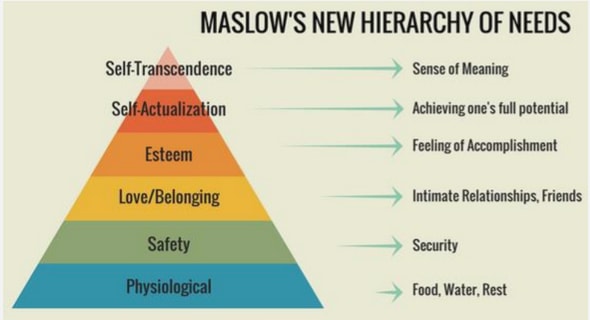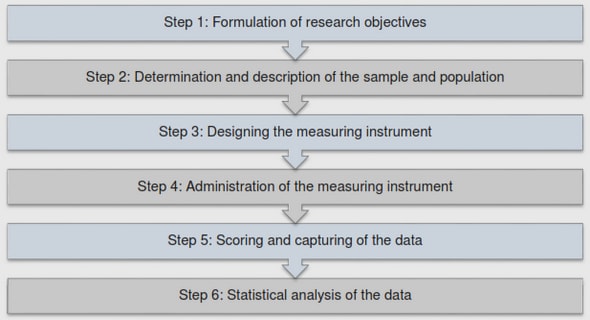Get Complete Project Material File(s) Now! »
Firm performance
According to the Oxford English Dictionary (2011), performance is defined as: the extent to which an investment is profitable. The authors have decided to define firm performance through market growth as well as market share. Market share is defined as: company sales divided by market sales (Kotler & Armstrong, 2013). It implies how large a company is compared to its competitors in relation to the market size.
Market growth is the extent to which a company grows as a result of increased demand from consumers (Ibid).
According to Kotler and Armstrong (2013), organizations need growth in order to satisfy stakeholders, compete more effectively as well as attract top talent. Furthermore, organizations need to avoid making growth itself the aim of the company, rather, companies should focus on managing profitable growth through marketing strategies (Ibid). This can be easily identified among service firms, where number of employees in the service sector increased by 12% between 1995 and 2005; in contrast, the manufacturing industries experienced a 12% decrease in employment during the same period (Oghazi 2013; Oghazi 2014).
Theoretical perspectives of CSR
In order for companies to function, they are required to develop a strong financial base. Without the right economic thinking, companies would cease to exist (Ames & Wellsfry, 1983). With regards towards this, agency theory plays a crucial part in the economic development of companies. The theory was conceptualized by Friedman (1971) and as mentioned in Oghazi’s research (2014), agency theory is explained as: “Managers are agents and have as their primary responsibility shareholder wealth maximization” (p. 126). With this in mind, it is understood that the basis of all companies, is to maximize their wealth. Without this, it would be merely impossible for companies to invest into other strategies (Brush & Chaganti, 1999). Therefore, agency theory acts as the base for companies to grow upon. According to Eisenhardt (1989), “Agency theory can by regarded as enriching economies by offering a more complex view of organizations” (p. 60).
Companies also consist of stakeholders. Stakeholders represent any party which have a stake in the company, be it the customers, employees, local community etc. The theory was conceptualized by Freeman and Reed (1983) and entails the fact that companies need to build trust and rapport with their stakeholders through ethical management in an attempt to improve the state of the company.
To further build up an organized as well as efficient company, aspects related to institutional theory may play a crucial part. According to Jennings and Zandbergen (1995), institutional theory states that institutions have a large effect in molding what is appropriate within a specific background in order to build a socially responsible company. This is achieved through different forces; coercive (pressures of regulatory authorities), mimetic (pressures to copy competitors), as well as normative (pressures originated within markets). With these factors, different pressures make institutions conform to pressures, or enhance their performance through them (Jennings & Zandbergen, 1995).
Continuing on a company’s performance, theory of the firm can also be applicable. According to McWilliams and Siegel (2001), theory of the firm entails the adoption of supply and demand aspects which may be used to utilize the ideal investment of CSR through a cost-benefit analysis. With these theories in mind, the adaptation of what may help comprise CSR is shown, but also shows theoretical barriers.
Corporate social responsibility
Throughout the development of CSR, researches have attempted to identify as well as outline the concept. CSR is a broad and ill-defined theory and due to the differing opinions on what CSR is, there have been several different definitions proposed and suggested, nevertheless, researchers have not yet agreed upon one mutual definition of the concept (McWilliams et al., 2006). One of the proposed definitions was by McWilliams and Siegel (2006), explaining CSR as: “Actions that appear to further some social good beyond the interests of the firm and that which is required by the law” (p.1). In contrast, Dahlsrud (2008) defined CSR through five dimensions; the environment, social, economic, stakeholder and voluntariness dimension. Furthermore, with regards towards the European Union, CSR is defined as a concept, when companies engage social as well as environmental issues in the organization’s day-to-day activities. In addition, these issues or concerns should be integrated when interacting with stakeholders, on a voluntary basis. At last, Carroll (1999) defines CSR with a set of social responsibilities in a pyramid, where companies should achieve economic, legal, ethical and philanthropic responsibilities. After having sifted through the different definitions, the authors of this report have decided to use Carroll’s definition of CSR as the fundamental frame for the research. The various definitions from the different authors are shown in the table below.
The pyramid of corporate social responsibility
Even though CSR is very broad, Carroll (1999) has further defined it into smaller dimensions that provide a general perception. The concept has been categorized into four different areas that support socially responsible activities, which are the following: economic, legal, ethical and philanthropic responsibilities. The different areas of the concept have been applied into a pyramid (see figure 1) to further extend the understanding of CSR. From observations of the pyramid, it is clear that economic responsibilities are seen as the foundation of the whole pyramid, as it backs up the rest of the components, which are eventually followed through. Carroll suggests that the different categories should not be followed in a chronological order; instead they should all be considered and implemented at the same time. Carroll concludes as he quotes: “The CSR firm should strive to make a profit, obey the law, be ethical, and be a good corporate citizen” (p. 43).
Economic responsibilities
The economical responsibilities in a firm are seen as the most critical of all business responsibilities and also as the foundation for the rest, as previously mentioned; therefore the category is placed on the bottom of the pyramid. Without any economic responsibility, it is nearly impossible to make any profits and stay competitive, which is the motive for most of the businesses today (Brush & Chaganti, 1999). Corporations need to know their objectives, stay committed and also strive for maximizing profits in order to compete in the market. Moreover, for organizations to be considered successful, they have to perform and profit in a consistent manner (Tang, et al., 2012).
Legal responsibilities
While Society has authorized businesses to operate under the motive of generating profit, they do so expecting businesses to follow the laws and regulations put forth by governments. Businesses are expected to pursue their goals of profit within the confines of the law, this is part of the “social contract” between businesses and society. The legal responsibility of companies is a sort of code of conduct that businesses should adhere to, otherwise legal sanctions may ensue. This code of conduct is established by lawmakers, the governing body of the area, be it local, state, federal or national. The legal responsibility category makes up the second level in Carroll’s pyramid of Corporate Social Responsibility (see figure 1) and coexists with the economical responsibility as crucial of the free enterprise system (Ibid).
Ethical responsibilities
Even though economic and legal responsibilities cover actions that should be done that supports the law, the ethical responsibilities consists of the activities, which are expected by members of the society even though it does not necessarily follow any law or regulation. Ethical responsibilities are what the consumers, shareholders, employees and the community believes is fair and just. Ethical and moral norms are evolving and it is important to recognize in addition to adapt to new norms developed by the society. Respecting and protecting the moral rights of others is crucial in every business and all players involved, in order to achieve corporate citizenship. Furthermore, ethical activities are not only expected to obey and respect laws, but go above and beyond them (Ibid).
Philanthropic responsibilities
This section of the pyramid discusses the actions which corporations take which are a direct response to the expectations of society. Corporations need to behave as good corporate citizens by actively taking part in goodwill and human welfare. As explained by Carroll, “CSR includes philanthropic contributions but is not limited to them; in short, philanthropy is the icing on the cake” (Carroll, 1991. pp. 42). Companies which actively contribute resources towards the betterment of the society are also seen as companies which strive for philanthropic behavior (Ibid).
Reconceiving products and markets
The needs of society are huge and always developing, the need for better standards, health, living et cetera. Because of this, companies have started tweaking their products and services in such a way that societal needs are met. For example, food distributors traditionally focused on the quantity as well as taste of their products to drive demand. However, now certain companies have started focusing on the nutrition values which their products offer towards their customers (Porter, 2011).
Redefining productivity in the value chain
A value chain involves several players and can be affected by numerous challenges. Societal issues can have a profound effect on a supply chain; issues such as depletion of natural resources, water consumption, health and safety and so on. Opportunities rise to create shared value because societal issues can have large effects on a company’s internal economic costs (Porter, 2011). For example, innovations in the disposal and recycling of plastics used in marketplaces has decreased the amount of waste in landfills, resulting in millions of dollars’ worth of disposal costs saved (Ibid). This means that shops are addressing the pressing matter of environmental concern whilst also creating a more efficient integral system for their value chain.
Building supportive industry clusters at the company’s locations
Porter explained that innovation and productivity is largely influenced by geographic concentrations or “clusters”. A cluster is a collection of related organizations, logistical infrastructure, service providers, institutions etc., in a particular field. Due to the high competition within these clusters, organizations are forced to innovate in order to maintain their position in the market.
Table of contents :
1 Introduction
1.1 Background
1.2 Introduction to Emballator Lagan Plast
1.3 Problem discussion
1.4 Purpose
1.5 Research questions
1.6 Delimitations
2 Theoretical framework
2.1 Firm performance
2.2 Theoretical perspectives of CSR
2.3 Corporate social responsibility
2.3.1 The pyramid of corporate social responsibility
2.4 Supplementary theories
2.4.1 Creating shared value
2.4.2 Corporate image
2.4.3 Competitive advantage
2.4.5 Lean Production
3 Methodology
3.1 Research approach
3.1.1 Inductive vs. Deductive research
3.1.2 Qualitative vs. Quantitative
3.2 Research design
3.2.1 Types of Approaches
3.3 Data sources
3.4 Research strategy
3.5 Data collection method
3.6 Data collection instrument
3.6.1 Operationalization measurement of variables
3.6.2 Interview guide
3.6.3 Types of interviews
3.6.4 Interview characterizations
3.6.5 Pretesting
3.6.6 Sample
3.7 Data analysis method
3.8 Quality criteria
3.8.1 Content validity
3.8.2 Construct validity
3.8.3 External validity
3.8.4 Reliability
4 Empirical findings
4.1 Firm Performance
4.2 Corporate Social Responsibility
4.2.1 Philanthropic
4.2.2 Ethical
4.2.3 Legal
4.2.4 Economic
4.3 Supplementary theories
4.3.1 Creating shared value
4.3.2 Corporate image
4.3.3 Competitive advantage
4.3.4 Stakeholder theory
4.3.5 Lean production
5 Analysis
5.1 Corporate social responsibility
5.1.1 Philanthropic
5.1.2 Ethical
5.1.3 Legal
5.1.4 Economic
5.2 Creating shared value
5.3 Corporate image
5.4 Competitive advantage
5.5 Stakeholder theory
5.6 Lean production
5.7 Firm performance
6 Conclusion
6.1 Theoretical implications
6.2 Managerial implications
6.3 Limitations
7 Future research
8 References


